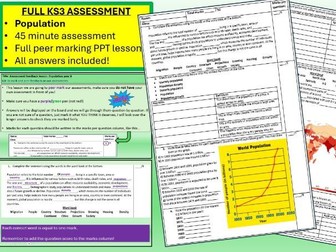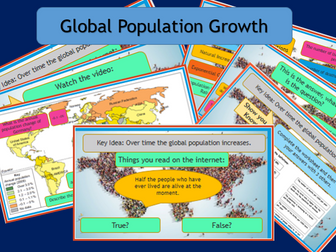The Development Gap: Changing Population Structures
AQA GCSE Geography lesson for the new specification unit 2B. In this lesson we look at how population pyramids can reveal changing population structures and levels of development. There is a literacy starter based on the content learned so far in the unit. We begin with an introductory video on population pyramids and the students have a question sheet to answer whilst they watch the video. Using the information they have gleaned from the video they then annotate two contrasting population pyramids to consolidate how the graphs can reveal a great deal about a country’s level of development. We briefly look at dependency rations and the students have a go at calculating a simple example ratio. We then construct a population pyramid for Nigeria using a worksheet and the students can then consider what it reveals about the country. The students then examine an ageing population but looking at Japan’s changing population structure and the students complete a task looking at the factors that have contributed top this. We then tackle a 6-mark GCSE-style question using the population pyramids they annotated earlier. There is a writing frame for structure and guidance on points to use. .
hope this saves you valuable planning time.
https://www.tes.com/teaching-resources/shop/markthegeographer













